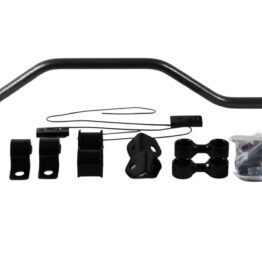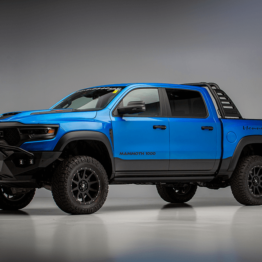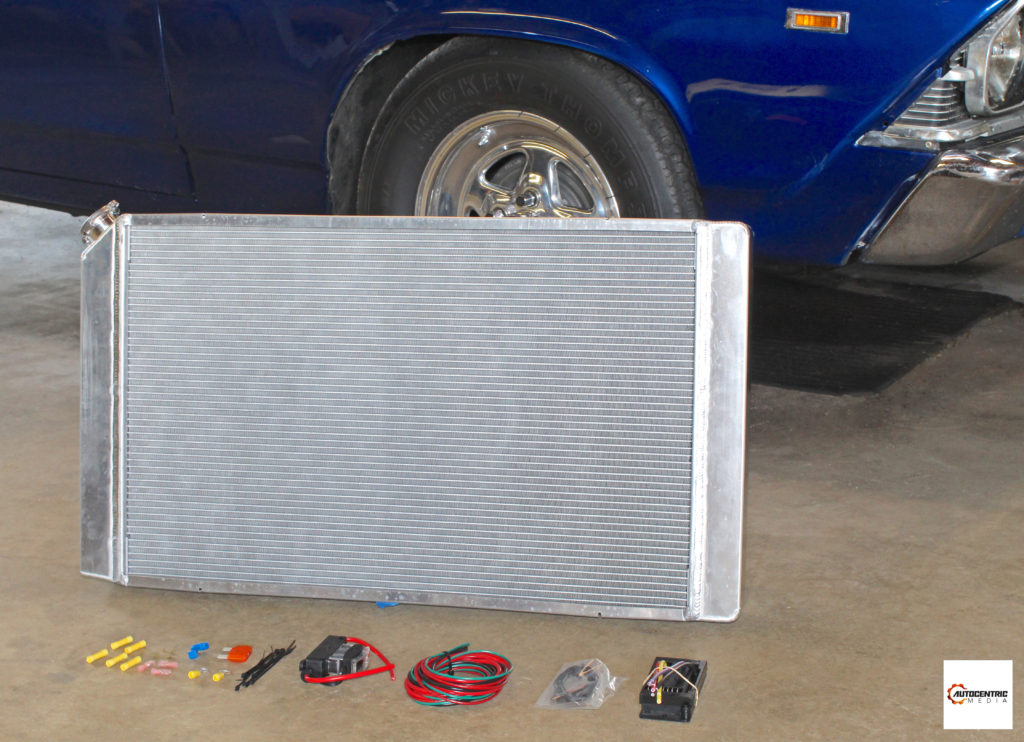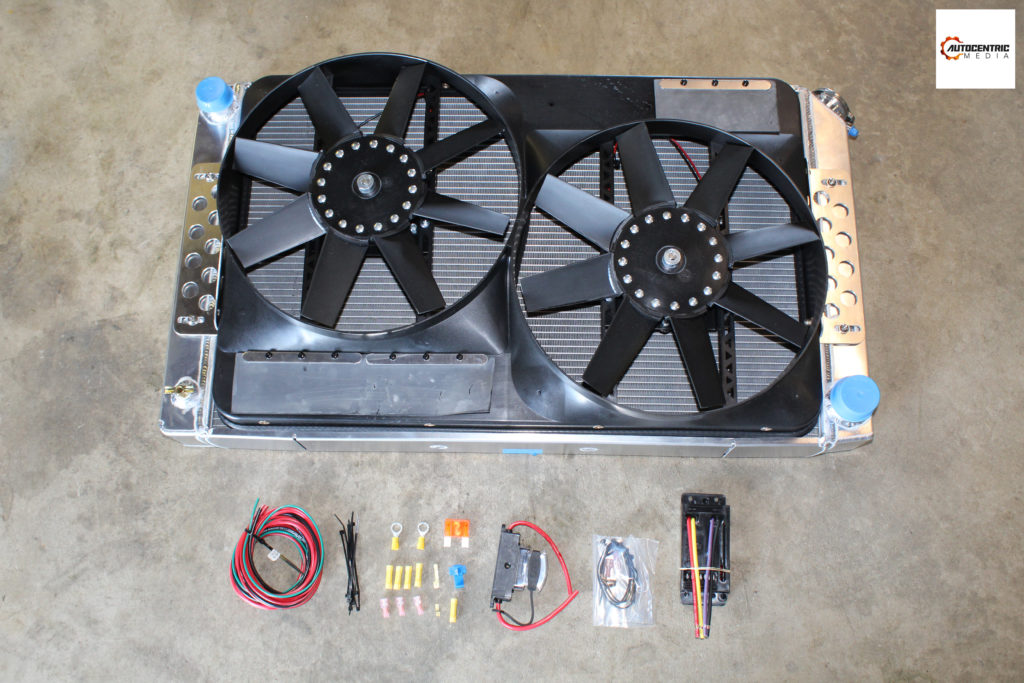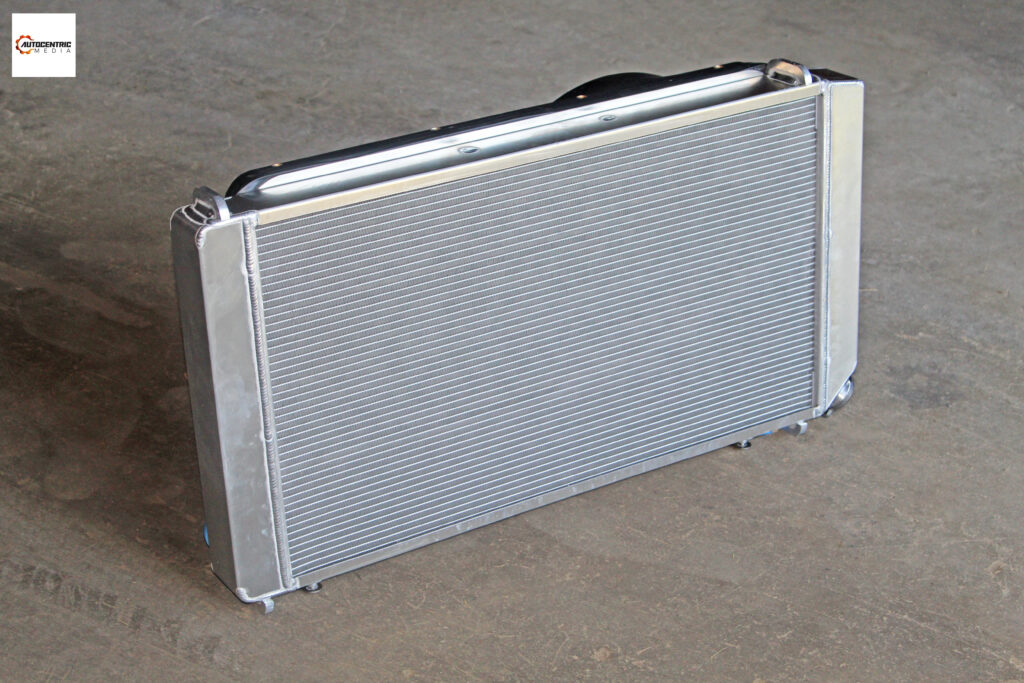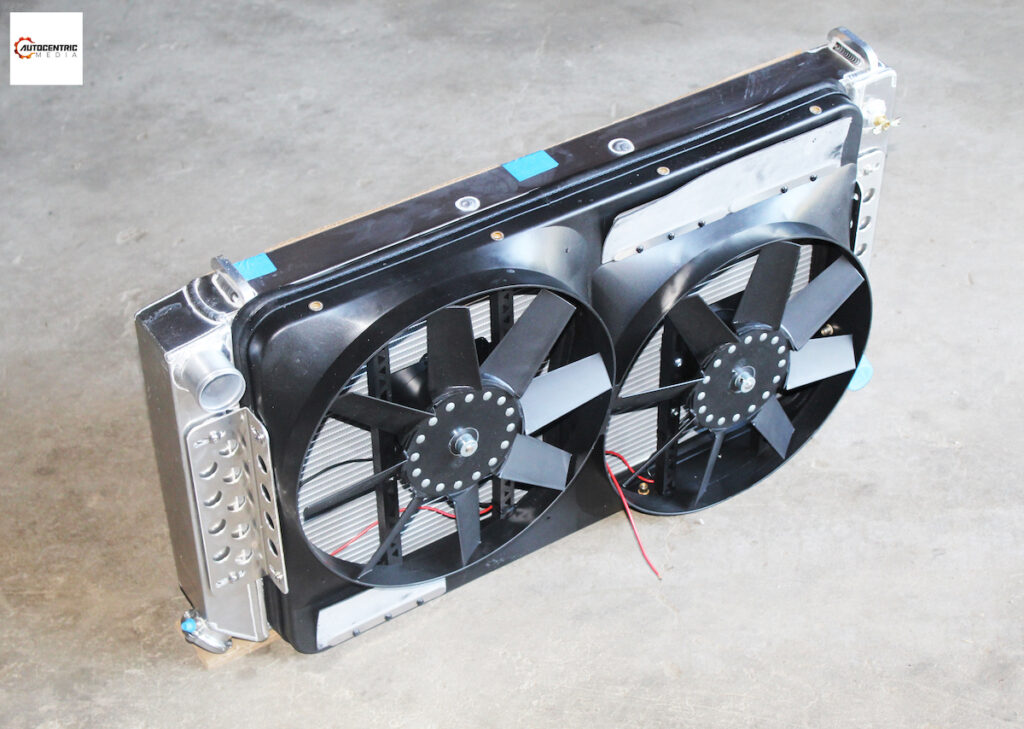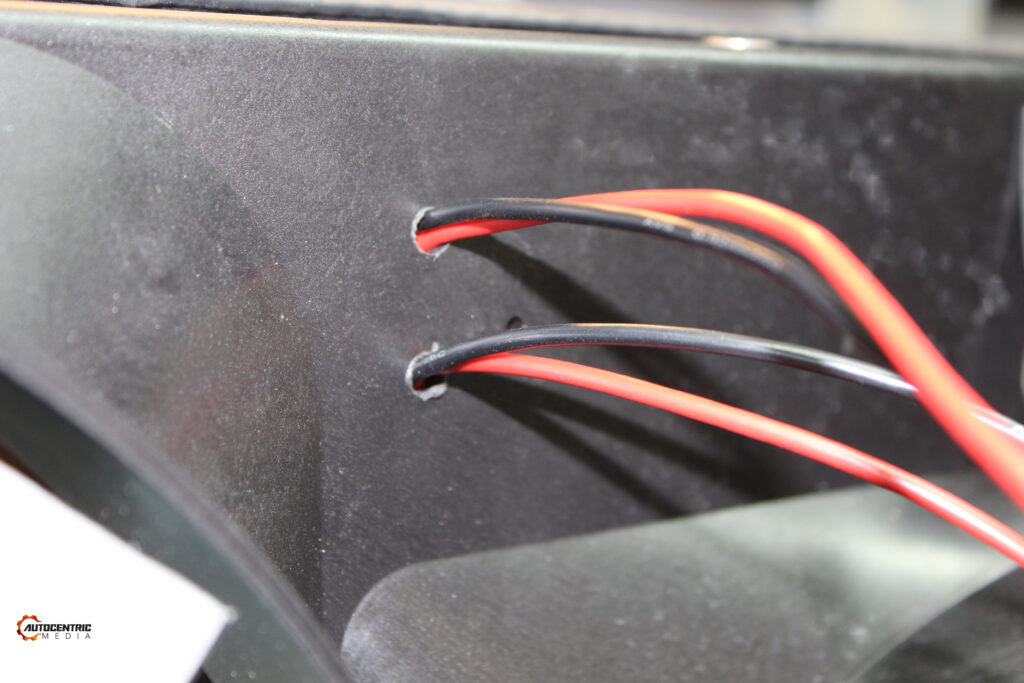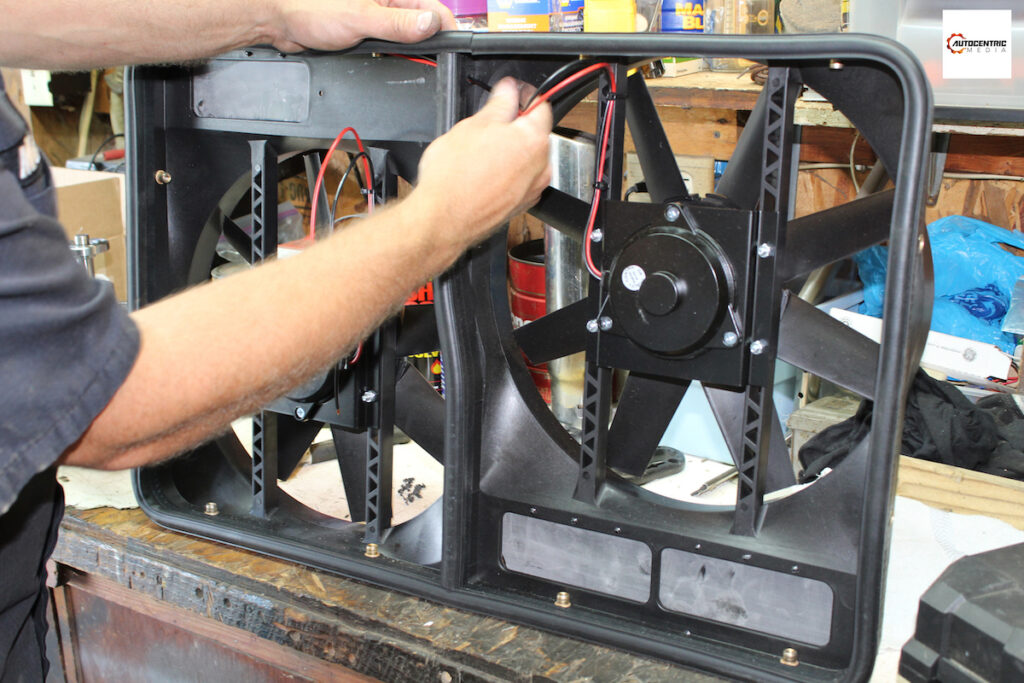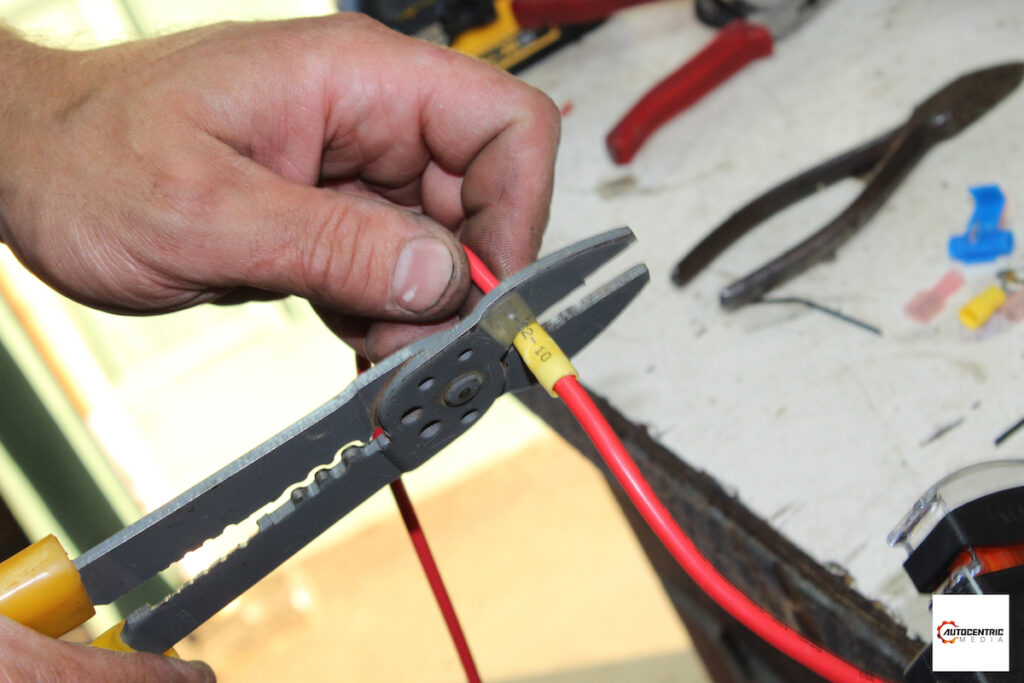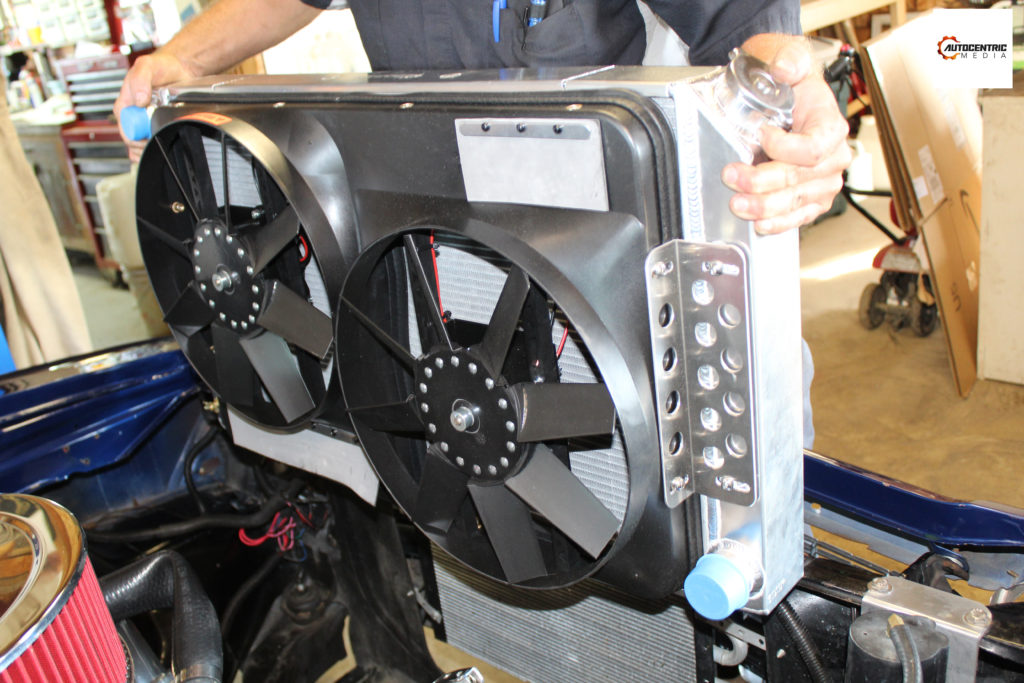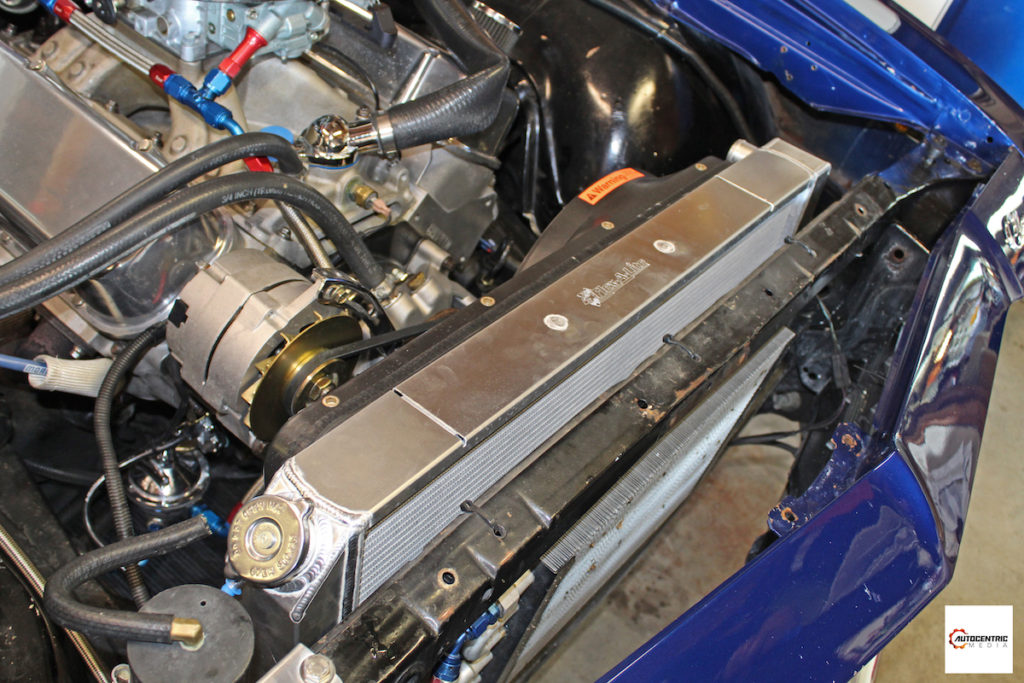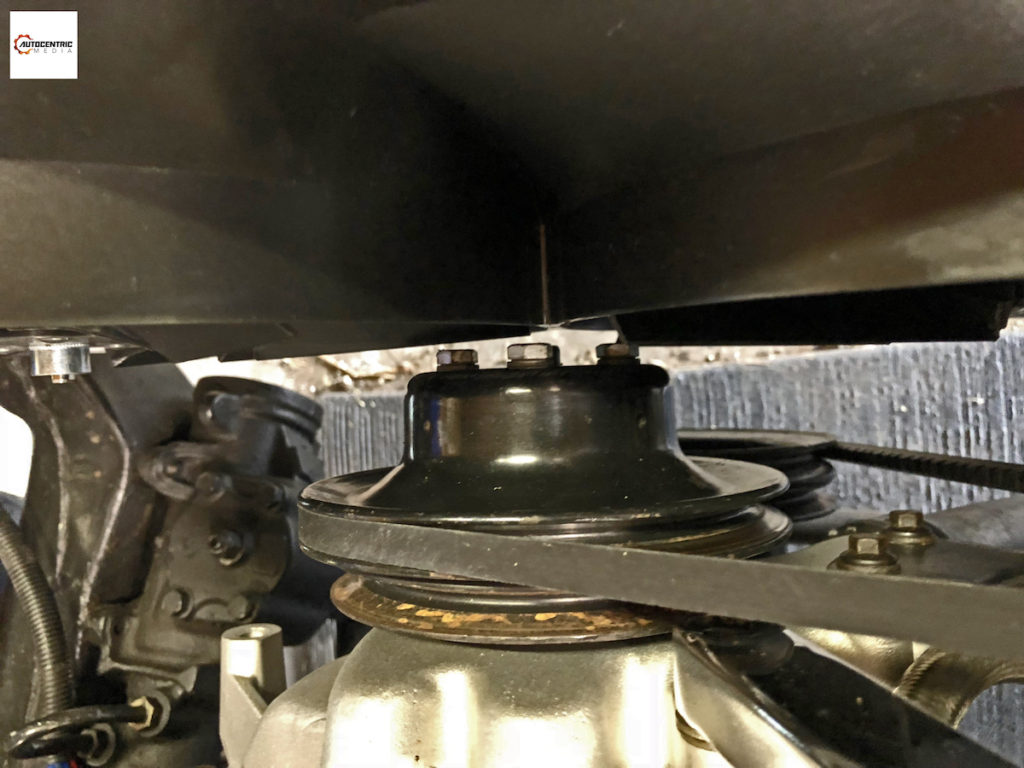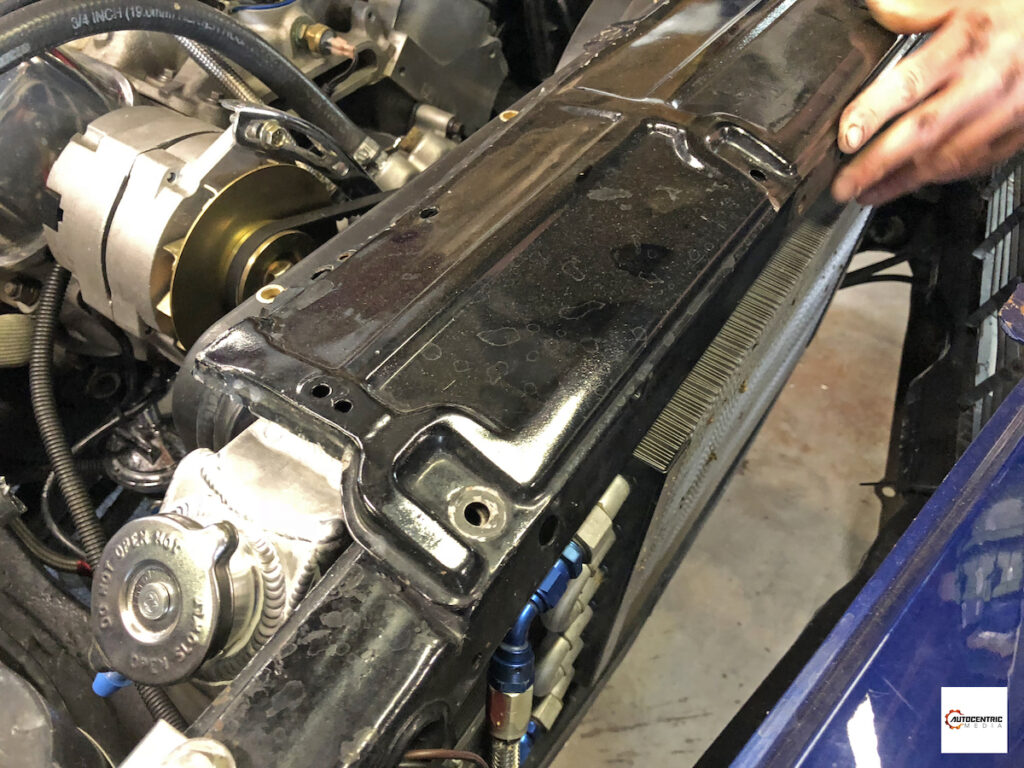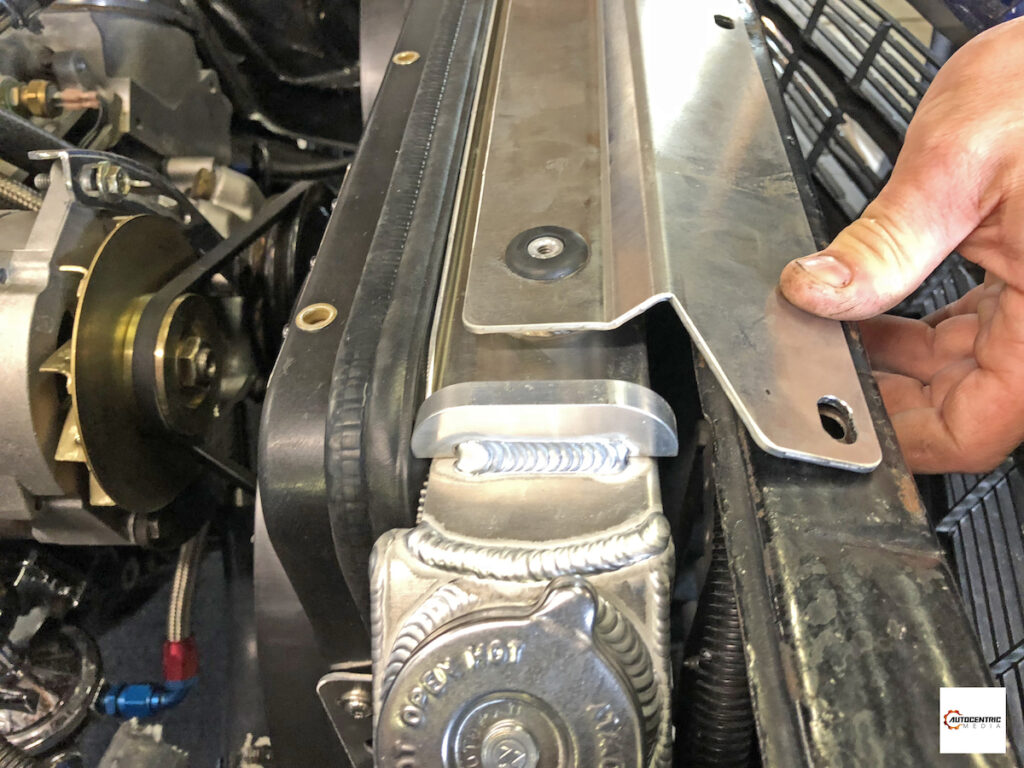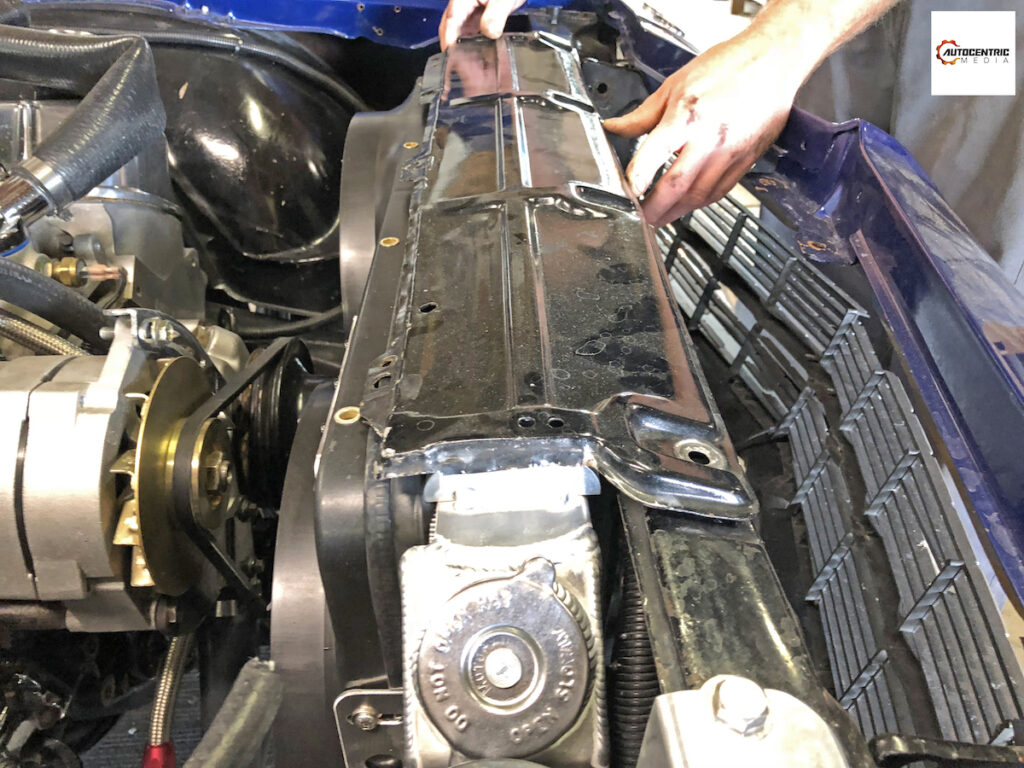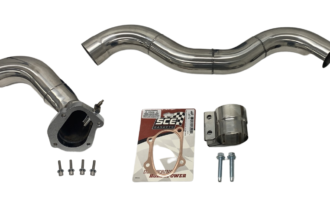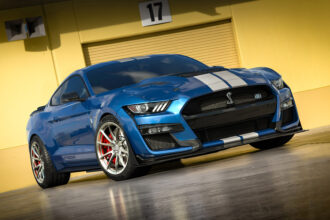photos by: the author
A Big-Block Chevelle is in Dire Need of Cooling Improvements, and Flex-A-Lite is Happy to Help
Building a muscle car for optimum performance is fun. Creating horsepower can be exciting. But when you’re making big horsepower from a big-inch engine, and don’t have the cooling capacity to keep things below temperature, things can go downhill pretty quick.
A little while back, a friend of ours from our neck of the woods, named Matt, was having some car trouble. Being the owner of a ’69 Chevelle SS with some old school flair and 565 cubic-inches between the fender flanks, he’s one who likes to hit the back country roads and the dragstrip on weekends in the summer. The Chevelle has been in Matt’s hands for as long as we remember, and he dropped in the big-block stroker a few years back and is still working out the details.
One of those details, include the cooling system. Back in the day when Matt was a young buck and in a pinch, he replaced his radiator with an off-the shelf unit from the local auto parts store. While it was sufficient enough for the mild big-block that he had at the time, it wasn’t going to be up to the task for what would later come. In this instance, the aforementioned 565 stroker that cranks out roughly 600hp.
Eager to get the car on the road, it was apparent that the radiator and fan setup in the engine bay wasn’t cutting the mustard. The car’s temperature would quickly climb while in traffic, and the temp needle would eclipse well into the 200s in a hurry, even on the highway. It was essentially undrivable, unless you took it out on a cool Autumn night. That wasn’t going to work for Matt, and it was apparent that he was going to have to step up the cooling system’s game.
Addressing, and Solving the Problem
The good news was, that our friends at Flex-A-Lite just released a brand new Extruded Tube Core radiator and fan kit for the ’68-72 GM A-body; which covers Chevelle, LeMans/Tempest, Cutlass and Skylark. It’s a direct-fit kit, too, so there’s no issues with fitment and you shouldn’t have to relocate, modify, or move anything significant around in order to slide one of these into your car.
Now you might be asking yourself, “What exactly is an Extruded Tube Core Radiator?” We’re glad you asked, because we’ve happy to tell you. It’s a new technology that will eventually find its way throughout the entire Flex-a-Lite radiator product line, with the ’68-72 GM A-body being first, and ’64-67 GM A-body being released right around the time that you read this. Fox Mustang is also available now, as are units for S197 Mustang, and late-model diesel pickups, with more to follow.
There are plenty of options out there for such a task, but looking to try something different and implement brand new technology into such a classic car, we dug a bit deeper. Below, we broke down the top features and benefits of the Extruded Tube Core radiators from Flex-A-Lite:
- Extruded Tube Core technology, replaces multi-core radiators with an advanced design
- Increases contact area between coolant and the extruded tubes for better heat rejection and cooling
- Provides a flat surface to braze the cooling fins to, maximizing the contact between the tubes and fins for increased heat rejection and better cooling
- The cooling fins have been designed with louver patterns cut into them to direct airflow, improving heat rejection and cooling
- Wind tunnel testing has shown that this Extruded Tube Core technology is significantly more efficient for cooling than standard tube radiators
- Extruded Tube Core Radiators are significantly stronger and have a 100-psi burst rating
- Include a corner subhead, reinforcing the cooling tube to header connection; an area prone to cracking and leaking in other brands of aluminum radiators
- Direct-fit applications bolt in without any drilling or cutting
- Flex-A-Lite Extruded Tube Core Radiators are available both with and without a Flex-A-Lite electric fan installed at the factory
- The Extruded Tube Core Radiators come with an exclusive 2-year transferable warranty
Extruded Tube Core performance radiators provide better cooling, less weight, and more strength over that of a traditional 2-, 3-, 4-core radiators. We can elaborate on this to the extreme, explaining every intricacy and detail about the science behind these innovative radiators, but for the sake of ease, we’ll let Chris Duke handle that department.
In the video below, Chris absolutely nails it. He breaks down the technology and how it works, and provides you the information you need to know behind the Extrude Core Radiator radiators. He also goes on to tell us how they’re much more efficient and beneficial than what we’ve become used to from our old radiators of the past.
The particular radiator that we’re using is for traditional Big- and Small-Block Chevy engines, falls under Part Number 316060. If you’re utilizing a more modern powerplant, such as a LS or GEN-V LT, Flex-a-Lite offers a version for that crowd falling under Part Number 316061. The radiator is available as a standalone unit, or you can order it as a kit, that brings with it slim-fit, dual electric fans and the required relay and wiring needed to implement them into your car.
Installation and Results
With the Extruded Core radiator kit in our shop, we were eager to get started. The kit includes the radiator itself, the dual electric fan kit, relay, the needed wiring and the aluminum top radiator support to help keep it in place.
Removing the stock radiator was straight forward, after allowing the car enough time to completely cool so we could drain the antifreeze. The coolant in Matt’s car was fresh, so we drained it into a clean bucket he had nearby, so we could reuse it in the new radiator. With the fluid drained, and the radiator support removed the old radiator was ready to come out.
The Flex-a-Lite kit arrives at your door with the slim-fit electric fans bolted onto the radiator, for the sake of easier shipping. However, if your car doesn’t already have electric fans and you need too wire everything in, like we had to do with the Chevelle, you have to separate the two in order to run the wiring.
We were honestly worried about the hose to neck fitment of the Flex-a-Lite radiator, being as how the one we were using was one of the very first ones off of the production line. Happily, Flex-a-Lite really did their R&D, and the hoses the car was already running were able to slide right onto the hose necks of the new radiator very easily. The radiator arrives at your door with the correct-size necks to fit your OEM hoses, top and bottom, so there’s no guesswork or having to get a different size radiator hose — at least not in our experience.
The Flex-a-Lite kit comes with easy to follow, detailed instructions on how to install and wire everything, from the fans to the relay, to the relay to the power output in your car. As we’ve mentioned before, everything is included; from the wiring to the connectors, to the relay, fuse and even the zip ties. Once we had the wiring how we needed it, we reattached the fans to the radiator and slid it into the car.
When we went to install the complete unit, we did notice that the radiator was a little wider than the bottom mounting bushings for the stock radiator. We’re not sure if they’re the original ones, or if they were replaced examples from another vehicle, but off-camera, we modified them to get the radiator to fit a little better. Again, results could vary now that these cars are over 50 years old, but we recommend that you test measure, and test fit, the bottom of the radiator to the radiator cushions before you fully install the radiator.
With that handled, the Extruded Core rad was looking, well, rad in the Chevelle’s engine bay. With the full aluminum construction, it also looked right at home with the aluminum heads, intake, water pump and valve covers. Oh, about that water pump..
We do recommend, that if you purchase this kit, that you also implement bolts with recessed heads that fasten flush into water pump pulley bolts, at least when used with a big-block Chevy application. The bolts used in Matt’s water pump pulley stuck out really close to the fan housing, partly because the Flex-A-Lite Extruded Core radiator was slightly thicker than the stock-type replacement radiator, but mostly because the bolts Matt was using in the water pump pulley.
They didn’t hit, but they’re a lot closer than what we would have liked. Since our shoot, this situation has been remedied, but please keep this in mind when you go to perform the install in your own car. When you combine the tight space with the engine’s high torque, the chassis’ inclination to flex and the vibrations that come with operating such a car, you don’t want to risk what could turn out to be a fairly ugly situation.
Compare the Flex-a-Lite upper radiator support with the OEM piece, and you can clearly see that there’s a difference to how it’s mounted and the overall dimensions. The look is quite different, too, and while some may prefer the OEM appearance, we have to choose the aesthetics of the Flex-a-Lite support. Plus, like the radiator itself, it adds a touch of class, appeal and modern sophistication to the engine bay.
The Flex-a-Lite radiator support features a billet aluminum construction, with the Flex-A-Lite logo etched into the center. It adds a premium look and feel to the car, and it compliments the radiator quite nicely. There are also rubber grommets implemented into the top of the support, that adds a barrier to the vibrations that you often get from the engine running.
Being aluminum, the steel mounting bolts could “eat” into the aluminum, eventually boring our the mounting holes over time. This prevents that from happening.
Another new component that has recently become available since our installation, is Flex-A-Lite’s new radiator cap. Like the radiator itself, it’s made in the USA, made out of billet aluminum, and is designed for high temperatures and high pressure applications. It’s also features an etched Flex-a-Lite logo on top, that lends a quality, high-end feel, complementing the overall presence of the radiator. 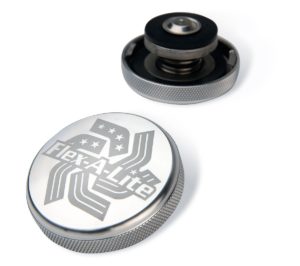
Post Install/Driving Impressions
After we had installed the Extruded Core radiator into the Chevelle, we took the car for an extended drive through the back country roads, and into town for a little stop and go fun. With the 180-degree thermostat that was already in place prior to the installation, the car never surpassed the 190-degree temperature mark.
Matt himself was quite miffed, as he had been used to the car running hot, in general, but the fact that we were able to put the car to the test, so to speak, for over an hour and encountered zero issues at all was amazing for him.
We even followed up with Matt weeks later, and he tells us that he’s had no issues whatsoever with his cooling system. When the weather breaks and the tracks up for the season, we have a feeling that we’ll be seeing Matt and the Chevelle at the local dragstrip more than we had in the past.
In the meantime, Flex-a-Lite is updating tighter entire radiator line for carious other vehicles, with 1st- and 2nd-gen F-body planned, as well as many others. Also, be sure to keep an eye on the Flex-a-Lite website as more applications are added in the coming months.

Rick Seitz is the owner and founder of AutoCentric Media, and has a true love and passion for all vehicles; GM, Ford, Dodge, imports, trucks — you name it! When he isn’t clacking away on his keyboard, he’s building, tuning, driving or testing his current crop of personal projects!




